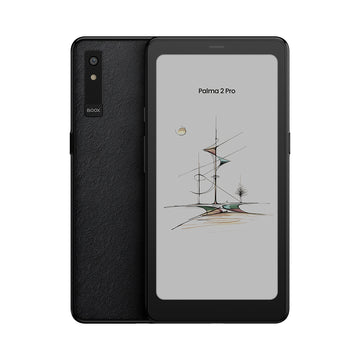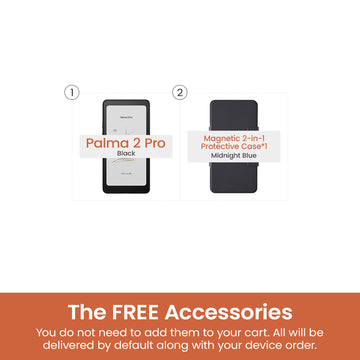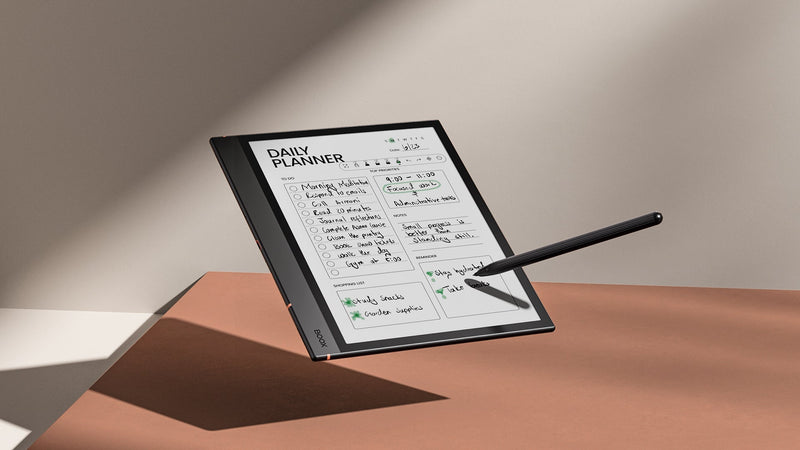3 Effective Note-Taking Methods: How do you take notes smartly?
From academics to professional work, note-taking is an essential practice. It is commonly used in people's daily lives, whether it's attending lectures, participating in meetings, or working on creative projects. It helps you to note important information, stay organized, and enhance your understanding.
You can take notes in different ways: on paper or digitally. Either way, you can take notes effectively. Making handwritten notes doesn't mean you have to cart around paper and pens to do it. BOOX E Ink tablets offer you both digital handwriting and note-taking capabilities.
In this article, we'll cover 3 effective note-taking methods and recommend BOOX E Ink tablets for you to take notes smartly. If you're looking for an organized and easy way to take notes, look no further in these effective note-taking techniques.
3 Effective Note-taking Methods
1. Outline Method
If you're in college, you may be familiar with this note-taking method. The Outline Method seems to be the most common note-taking technique for college students. The key to this effective note-taking method is to organize information in a hierarchical structure. It summarizes and condenses information, helping you to quickly identify relationships. With main ideas and supporting details identified, making it easier for you to review and study later.
Here are 5 simple steps to start writing outline notes:
Step 1. Outline a clear topic for your notes
Step 2. Divide it into subtopics
Step 3. Indent or use bullet points for supporting thoughts or ideas
Step 4. Be selective for key points and use abbreviations
Step 5. Repeat

Remember to use a consistent format to keep your notes organized and easy to revise for later on. You may also want to leave space between different sections to add any additional information.
With this hierarchical structure of notes, you can navigate and capture the key points quickly. You can use it while listening to lectures or during meetings to jot down information quickly. If you're a structured learner, then you can try the Outline method.
2. Cornell Method
The Cornell method is a popular approach to provide a systematic and organized approach to taking notes. The method involves dividing the paper into two columns and adding a row at the bottom. It doesn't need much preparation, making it great for lectures or during client meetings.
So, how to take Cornell notes? You can divide the note-taking page into three sections:
- A narrow left-hand column for cues or key points.
- A wider right-hand column for recording the main ideas and details.
- The bottom section summarizes the notes.

This note-taking method can benefit anyone who wants to improve comprehension and retention skills. Through Cornell notes, you may expect yourself to be more active in learning, mindfulness, and focus. If you're looking to review and study effectively, you can go for the Cornell method.
3. Mapping Method
Mapping is a method that uses a graphical representation to assemble information. Instead of using a linear format, the mapping method uses diagrams, symbols, and arrows.
The free-flowing and non-linear representation of ideas encourages creativity and critical thinking. You can also see the big picture, identify key concepts, and understand how they interconnect. So, you can get a deeper comprehension of the material. If you're a visual learner and want to brainstorm, then the mapping method is ideal for you.

The 3 effective note-taking methods are as above. You can choose based on your learning style and the purpose of notes. Experiment and combine different methods to personalize your own note-taking approach.
Paper vs. Digital Notes: Which is more effective?
Effective note-taking is not only about finding a suitable method, but also about how you take notes. The traditional way of note-taking is writing on paper. Some of you may still prefer to take notes in this way. It proves to be the best way to remember information and is more effective. Also, the feeling of writing on paper is completely different from typing digital documents.
Digital note-taking offers several benefits over traditional paper notes. It comes in various forms: type documents or written with a stylus. The most obvious benefit of digital note-taking is it can be easily searched and accessed with a few clicks.

You can access your digital notes anywhere you want. The accessibility and flexibility are what paper notes don't have. It gives you access on the go and provides you with convenience. Additionally, you can share and collaborate with others easily. If you're working as a team, shareable notes are ideal.

Both note-taking formats have their own advantages. Traditional note-taking enhances memory retention, while digital note-taking offers flexibility and accessibility. With BOOX, you don't have to sacrifice either benefit. BOOX Note Air2 Plus, Tab Ultra, and Tab Ultra C are the suggested devices for note-taking and multitasking. You can take notes on the paper-like screen and enjoy the enhanced searchability, and flexibility of digital notes with BOOX.
Wrap Up
To conclude, it's important to note that there is no one-size-fits-all approach or the best note-taking device that works best for you.
Each note-taking method caters to different learning styles, so choose the one that aligns with your preferences. If you thrive on structure and organization, the Outline method is worth trying. For those seeking an effective way to review and study, the Cornell method is a great option. If you're a visual learner who enjoys brainstorming, the mapping method is perfect for you.
BOOX E Ink tablets allow you to review, revise, and organize notes quickly and easily. Especially with Note Air2 Plus, you can take notes effectively and remain focused. But, if you prefer a more visually stimulating and imaginative approach to note-taking, the Tab Ultra C would be a better option.













